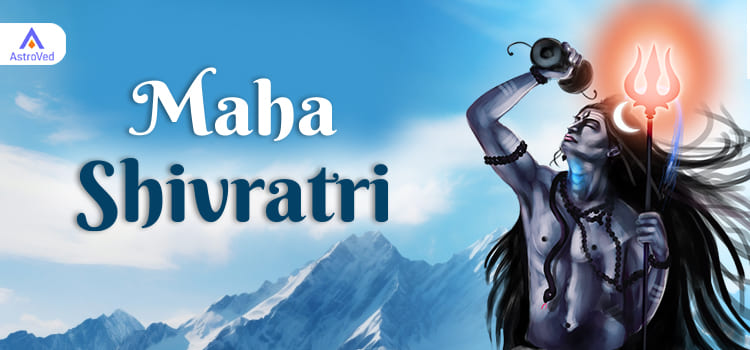Maha Shivaratri
Maha Shivaratri is a Hindu festival that honors Lord Shiva. It marks the wedding day of the deity and falls right in late February or early March. A major festival for Shavites, it will be held on March 8, Friday, in 2024. Maha Shivaratri is also called ‘the Great Night of Shiva’.
The festival is celebrated on the 14th night of the new moon in the Hindu month of Phalgun (Feb- March). Devotees observe a day and night fast and offer worship to Shiva.
Significance of Maha Shivaratri
Maha Shivaratri has great spiritual significance for Hindus. The divine energies of Shiva and his consort, Shakti, are believed to converge on this day. On this day, powerful spiritual energies are prevalent in the earth plane and are accessible to devotees through spiritual practices like fasting, meditation, and prayer. While most Hindu festivals are celebrated during the daytime, Shivaratri celebrations take place during the night.
There are many legends surrounding Maha Shivaratri and several Puranas talk about its significance. The Linga Purana is one among them. One legend claims that on this night, Shiva performed the 'Tandava' dance. Devotees chant hymns praising Shiva and recite scriptures as part of the rituals. Another legend is related to the marriage of Shiva and Parvati, which took place on this day. Hence, the festival is important for married couples and unmarried women who desire a good husband.

Maha Shivaratri Pooja Rituals
Maha Shivaratri Pooja is performed in the early hours of the morning. Devotees have a bath before sunrise, wear new clothes, and visit Shiva temples. This day has great significance for women. They take part in the traditional Maha Shivaratri Pooja and offer water, milk, Bael leaves, and fruits like Ber or jujube fruit, on the occasion. They also perform 3-7 circumambulations around the Shiva Lingam, followed by the ritual Abishekams, when milk, leaves, fruits, and flowers are offered to the Lingam. Incense sticks are also burnt at this time.
The Maha Shivaratri Pooja has 6 elements, and each has a unique meaning:
∙ Bathing the Shiva Lingam (Abishekam) with water and milk, along with the offering of Bael leaves, represents the purification of the soul.
∙ Applying vermilion after the bath signifies virtue.
∙ Offering fruits during worship signifies wish-fulfillment and longevity.
∙ The burning of incense sticks symbolizes wealth.
∙ Betel leaves signify contentment gained from worldly desires.
∙ The lighting of lamps represents the attainment of wisdom and knowledge.
A very important ritual of this festival is the night-long vigil at Shiva temples by devotees. On the night of Maha Shivaratri, the chants of 'Om Namah Shivaya' fill Shiva temples, and devotees sing Bhajans or devotional songs praising Shiva.
The Legend Behind Maha Shivaratri Vrat/Fast
One of the most well-known legends about Maha Shivaratri tells the story of Parvati's rigorous penance to gain Shiva as her husband. Her penance melted Shiva’s heart, and the duo got married on the 14th day of the dark fortnight of Phalgun month.
The Garuda Purana offers a different version. As per this legend, a hunter went on a hunting expedition to the forest but failed to find any prey. Night fell, and exhausted, he stopped by a pond, where he saw a Shiva Lingam beneath a Bilva tree. As he was hungry, he plucked some leaves from the tree, and some of the leaves fell on the Shiva Lingam. He also took some water from the pond and poured it on his feet to wash them. Some drops of water splashed on the Shiva Lingam.
While engaged in these actions, one of his arrows fell down, and he bent to catch it. In the process, he bowed before the Shiva Lingam. Thus, without intending to, he performed Shiva Pooja on the night of Shivratri. After he died, when the messengers of Yama, the God of death, came to claim his soul, Shiva sent his entourage to protect him and bring him to Mt. Kailas.
Maha Shivaratri Celebrations
The festival is celebrated in different ways in different regions. In Tamil Nadu, the Annamalai temple sees grand celebrations. Devotees undertake a 14-kilometre walk, barefoot, around Shiva's temple located on the hilltop. This is called Girivalam or Giri Pradakshina.
In Mandi town (Himachal Pradesh), which is also called ‘Varanasi of the Hills’ and ‘cathedral of temples,’ there is a 7-day international fair that attracts devotees from many parts of India. Around 200 Hindu deities from 81 temples in Mandi district assemble here on this day.
In West Bengal, unmarried women visit Tarakeswar, a holy place, to pray for a good husband on this auspicious day.
On Maha Shivratri, married Hindu women bathe the Shivalinga with milk and pray for the well-being of their sons and husbands. Hindu mythology says that Goddess Parvati offered prayers on this day to protect her husband from all evil. Hence, Maha Shivaratri is a very auspicious day for women.
Devotees bathe in the Ganges or other holy water bodies early in the morning and observe a purification ritual like worshipping the sun, Shiva, and Vishnu. Then they wear clean clothes, carry pots of water to the temple, and pour the water on the Shiva Lingam.
They adorn the Lingam with garlands and flowers and offer fruits and incense sticks.






